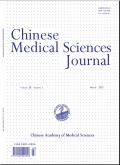心肌应变在监测胃肠道肿瘤患者氟尿嘧啶化疗相关心功能障碍中的价值。
Q2 Medicine
引用次数: 0
摘要
目的:探讨心肌应变对胃肠道肿瘤患者氟尿嘧啶化疗相关心脏毒性的预测价值。方法:诊断为胃肠道肿瘤并住院接受抗代谢药物化疗的患者入选本前瞻性研究。在住院期间每个化疗周期前后进行超声心动图检查,直至化疗完成。如果左心室射血分数(LVEF)从基线下降至少5%至绝对值< 53%,并伴有心力衰竭的症状或体征,则确定为癌症治疗相关心功能障碍(CTRCD);或LVEF从基线下降至少10%至绝对值< 53%,无心衰症状或体征。亚临床心脏损害的定义是左心室总纵向应变(GLS)比基线降低至少15%。收集临床资料和心肌应变变量。观察化疗后各周期超声心动图指标的变化,并与化疗前比较。采用Cox回归分析确定CTRCD的相关指标,绘制受试者工作特征(ROC)曲线,评价其预测疗效。结果:51例患者完成4个化疗周期,纳入研究分析。化疗4个周期后,LVEF、GLS、GLS心外膜(GLS-epi)、GLS心内膜(GLS-endo)均下降。整个化疗期间,6例(11.8%)进展为CTRCD。Cox回归分析显示,第一周期化疗后左房射血分数(LAEF)和左房射血分数(LAS)(分别为C1v-LAEF和C1v-LASr)的变化与CTRCD的发生有显著相关性[C1v-LAEF (HR=1.040;95%置信区间:1.000—-1.082;P = 0.047);C1v-LASr (HR = 1.024;95%置信区间:1.000—-1.048;P = 0.048)。当C1v-LAEF >值为19.68%时,C1v-LAEF预测CTRCD的敏感性为50.0%,特异度为93.3%;当C1v-LASr >值为14.73%时,C1v-LASr预测CTRCD的敏感性为66.7%,特异度为75.6%。C1v-LAEF和C1v-LASr预测CTRCD的ROC曲线下面积(AUC)分别为0.694和0.707。结论:在接受氟尿嘧啶类化疗的亚临床心功能损害患者中,GLS变化以及左心房C1v-LAEF和C1v-LASr是心功能恶化的早期预测指标。本文章由计算机程序翻译,如有差异,请以英文原文为准。
Value of Myocardial Strain in Monitoring Fluorouracil-Based Chemotherapy-Related Cardiac Dysfunction in Gastrointestinal Cancer Patients
Objective
To investigate the predictive value of myocardial strain for cardiotoxicity associated with fluorouracil-based chemotherapies in gastrointestinal cancer patients.
Methods
Patients with diagnosis of gastrointestinal cancers, who were hospitalized for chemotherapy involving antimetabolic drugs, were eligible in this prospective study. Echocardiography was performed before and after each chemotherapy cycle during hospitalization until the completion of chemotherapy. Cancer therapy-related cardiac dysfunction (CTRCD) was identified if there was a decrease in left ventricular ejection fraction (LVEF) by at least 5% to an absolute value of < 53% from the baseline, accompanied by symptoms or signs of heart failure; or a decrease in LVEF of at least 10% to an absolute value of < 53% from the baseline, without symptoms or signs of heart failure. Subclinical cardiac impairment is defined as a decrease in the left ventricular global longitudinal strain (GLS) of at least 15% from baseline. Clinical data and myocardial strain variables were collected. Changes of echocardiographic indexes after chemotherapy at each cycle were observed and compared to those of pre-chemotherapy. Cox regression analysis was used to determine the associated indexes to CTRCD, and receiver operating characteristic (ROC) curves were plotted for evaluation of their predicting efficacy.
Results
Fifty-one patients completed 4 cycles of chemotherapy and were enrolled in the study analysis. LVEF, GLS, GLS epicardium (GLS-epi), and GLS endocardium (GLS-endo) were decreased after the 4 cycles of chemotherapy. Throughout the chemotherapy period, 6 patients (11.8%) progressed to CTRCD. The Cox regression analysis revealed that the change in left atrial ejection fraction (LAEF) and LAS during the reservoir (LASr) phase after the first cycle of chemotherapy (C1v-LAEF and C1v-LASr, respectively) were significantly associated with the development of CTRCD [C1v-LAEF (HR=1.040; 95%CI: 1.000-1.082; P=0.047); C1v- LASr (HR=1.024; 95%CI: 1.000-1.048; P=0.048)]. The sensitivity and specificity were 50.0% and 93.3%, respectively, for C1v-LAEF predicting CTRCD when C1v-LAEF > 19.68% was used as the cut-off value, and were 66.7% and 75.6%, respectively, for C1v-LASr predicting CTRCD when C1v-LASr > 14.73% was used as the cut-off value. The areas under the ROC curve (AUC) for C1v-LAEF and C1v-LASr predicting CTRCD were 0.694 and 0.707, respectively.
Conclusion
GLS changes among patients with subclinical impairment of cardiac function who were treated with fluorouracil-based chemotherapies, and C1v-LAEF and C1v-LASr of the left atrium are early predictors of cardiac function deterioration.
求助全文
通过发布文献求助,成功后即可免费获取论文全文。
去求助

 求助内容:
求助内容: 应助结果提醒方式:
应助结果提醒方式:


